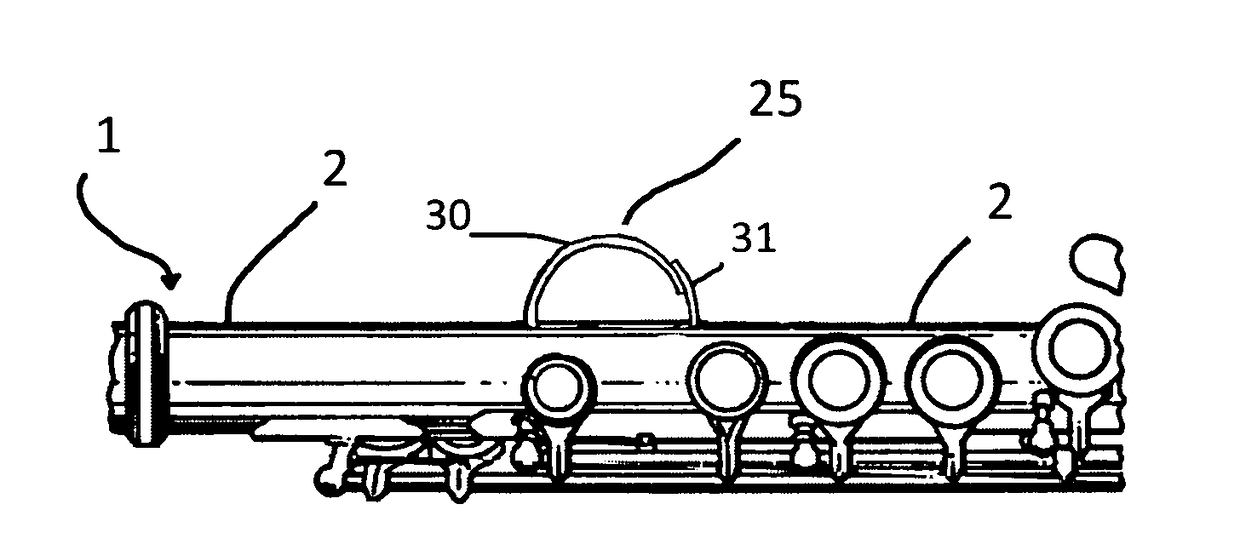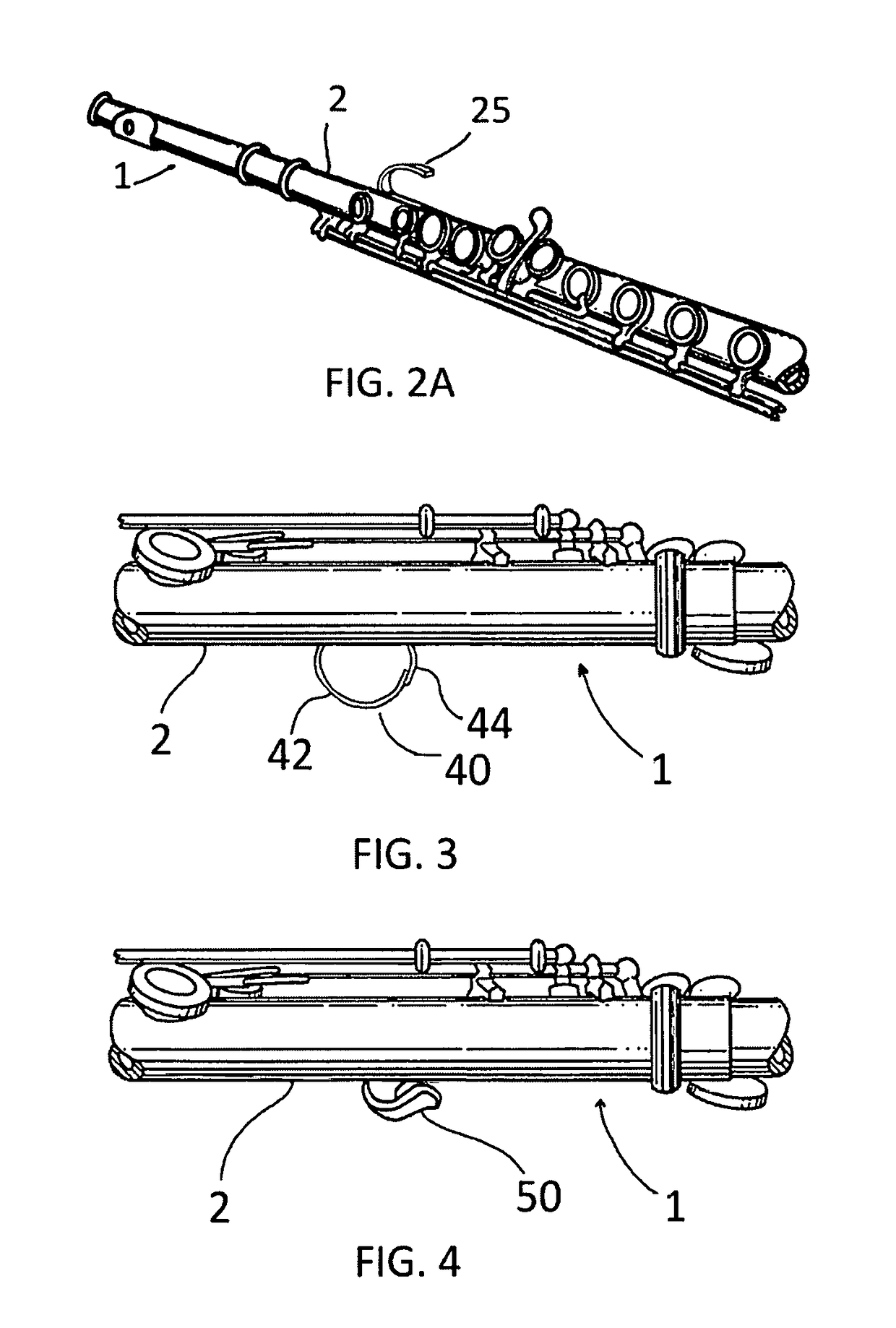Flute with Enhanced Flute-Finger Connection
a flute and finger technology, applied in the direction of flutes/fifes, instruments, musical supports, etc., can solve the problems of inability to properly control and operate the musical instrument with hands and fingers, affecting the stability of the flute, and innate tendency to roll, so as to facilitate the improved operation of the flute, reduce the effect of innate roll and inclination, and ensure the effect of stability
- Summary
- Abstract
- Description
- Claims
- Application Information
AI Technical Summary
Benefits of technology
Problems solved by technology
Method used
Image
Examples
Embodiment Construction
[0044]In FIG. 1 is shown a flute, 1, in the tubular body of which, 2, is constructed a flute-finger connector adjustable ring, 25, which the size of the opening therein is adjusted by bending the malleable arms of the ring, 30 and 31. FIG. 1A shows the invention from a more distant perspective view. FIG. 2 shows the same from the back side of the flute. FIG. 2A shows the same view of a flute with a flute-finger connector as in FIG. 1A, but with a partial ring flute-finger connector comprising only a single, malleable, adjustable arm.
[0045]FIG. 3 shows a flute-thumb connector, 40, similar to that described and illustrated above, located on the lower part of the flute between the E and F keys of the flute, where the thumb of the player's right hand rests. As above, it is an adjustable ring, which the size of the opening therein is adjusted by bending the malleable arms of the ring, 42 and 44. FIG. 4 shows a flute-finger connector for the thumb comprising a clip, 50, which can be made ...
PUM
 Login to View More
Login to View More Abstract
Description
Claims
Application Information
 Login to View More
Login to View More - R&D
- Intellectual Property
- Life Sciences
- Materials
- Tech Scout
- Unparalleled Data Quality
- Higher Quality Content
- 60% Fewer Hallucinations
Browse by: Latest US Patents, China's latest patents, Technical Efficacy Thesaurus, Application Domain, Technology Topic, Popular Technical Reports.
© 2025 PatSnap. All rights reserved.Legal|Privacy policy|Modern Slavery Act Transparency Statement|Sitemap|About US| Contact US: help@patsnap.com



